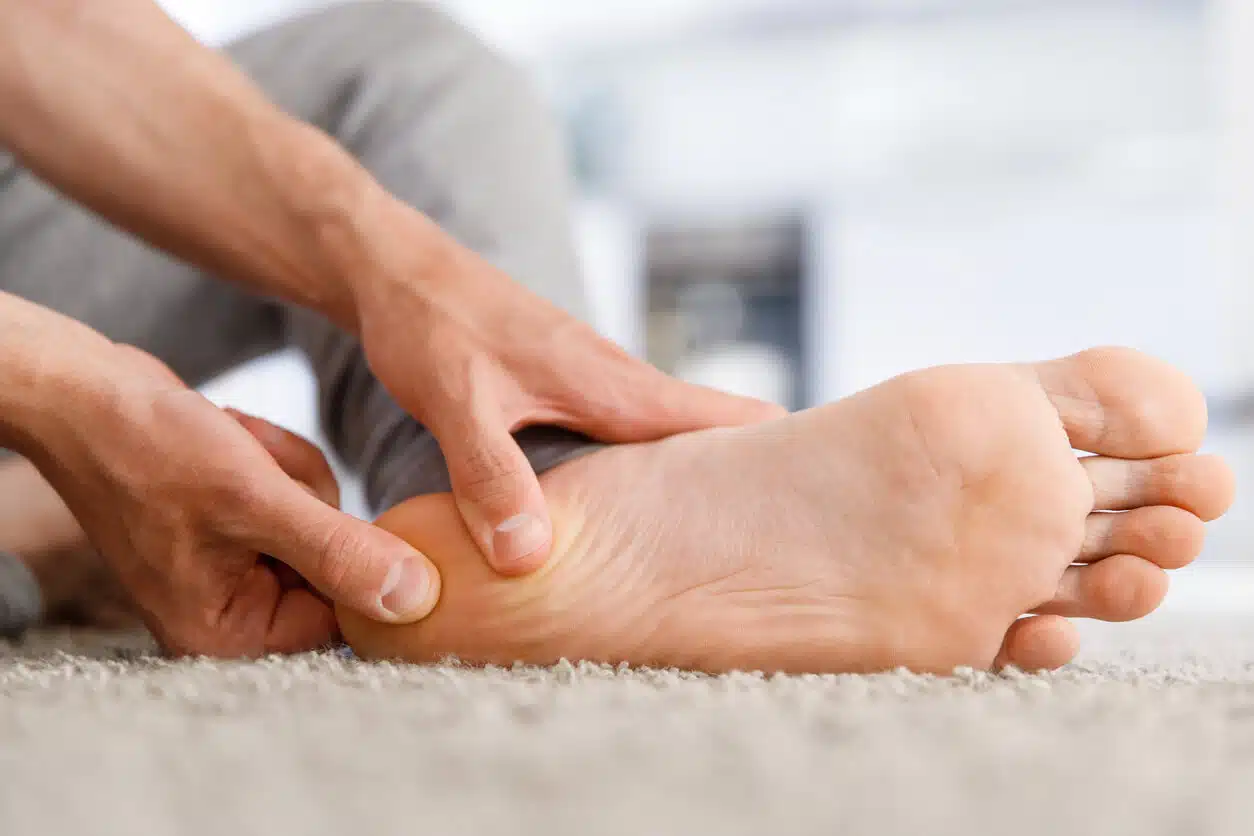
For individuals with diabetes, proper foot care is essential. One aspect of foot care is choosing the right socks. Diabetic socks are constructed to meet the special needs of individuals with a diabetic foot.
Not all diabetics need diabetic socks, however, your foot and ankle doctor or podiatrist may recommend them to you due to their special features that can benefit you.
In this article, we will explore the features of diabetic socks and explain why they matter.
Seamless Construction
Socks with seamless construction are essential for individuals with diabetic feet. Seams can cause friction and irritation, leading to blisters and ulcers. Opting for seamless socks minimizes the risk of rubbing against sensitive skin.
Moisture-Wicking Properties
Diabetic feet are susceptible to excessive moisture build-up that can lead to fungal infections, which can easily lead to serious complications. Look for socks made from materials like merino wool or synthetic fibers with moisture-wicking properties. These socks effectively draw moisture away from the skin, keeping feet dry and reducing the risk of fungal infections.
Non-Binding Tops
Choosing socks with non-binding tops is crucial as they prevent constriction around the calf or ankle. Elastic bands that are too tight can impede circulation, leading to discomfort and potential foot problems. Look for socks that provide a comfortable, yet secure fit without leaving marks or causing pressure points.
Cushioning and Padding
Diabetic feet often lack natural padding due to loss of fat tissue, making them prone to injuries from pressure points. Opt for socks that offer extra cushioning and padding in areas prone to impact, such as the heel and the ball of the foot. This added protection helps distribute pressure more evenly.
Breathability
Proper airflow is essential to maintain foot health. Look for socks that are breathable and allow air circulation around the feet. Breathable materials, such as cotton blended with other moisture-wicking synthetic fibers, help prevent excessive sweating and reduce the likelihood of bacterial or fungal growth.
A White Sole
A white sole helps diabetics with compromised sensation, serving as a reliable indicator for detecting draining wounds. The stark contrast allows for easy identification of stains caused by open wounds that demand immediate attention.
Proper Fit
Choosing socks that fit properly is crucial for individuals with diabetic feet. Socks that are too tight can restrict blood flow, while loose-fitting socks can cause friction and lead to blisters. Ensure the socks provide a comfortable and snug fit without constricting the feet. Consider socks with sizing options to ensure an appropriate fit for your foot dimensions.
Compression
Compression therapy has been scientifically proven to offer an effective treatment option by promoting improved valve functioning and facilitating proper and faster blood flow into the feet. Some diabetic socks offer compression to support blood circulation in diabetics.
Why Your Socks Matter
The socks you wear can make a difference in the following:
● Reduced Risk of Ulcers and Infections
Seamless construction and moisture-wicking properties in diabetic socks minimize the risk of skin irritation and other conditions that can quickly become serious complications in individuals with diabetes.
● Improved Comfort
Diabetic socks are not like regular socks. They have proper cushioning and padding, which offer increased comfort and help reduce pressure points.
● Enhanced Circulation
Diabetics can suffer from circulation issues, making it difficult to tell if their extremities are too hot or too cold. Non-binding tops help prevent further constriction that can impede blood flow, and therefore promote healthy circulation in the feet.
● Optimal Foot Protection
By selecting diabetic socks with the right features, diabetics can protect their feet and minimize the risk of not just external damage but also issues that can arise from socks that are too thin or lack protective qualities.
There are many types of diabetic socks. In order to choose the best ones for you, consult a foot and ankle doctor who specializes in diabetic foot care.
Diabetic Foot Management in North Dakota
As a diabetic, you want to have the support of a qualified foot and ankle doctor, one who can provide comprehensive diabetic foot care services. The doctor can create an individualized treatment plan, which includes recommendations on diabetic socks and shoes.
To bring your foot care to the next level, choose the expert foot and ankle doctors at The Bone & Joint Center. To schedule an appointment, call our office today at (701) 946-7400 / (866) 900-8650 or use our online form to schedule your visit. We look forward to providing you the highest quality care for a diabetic foot.

